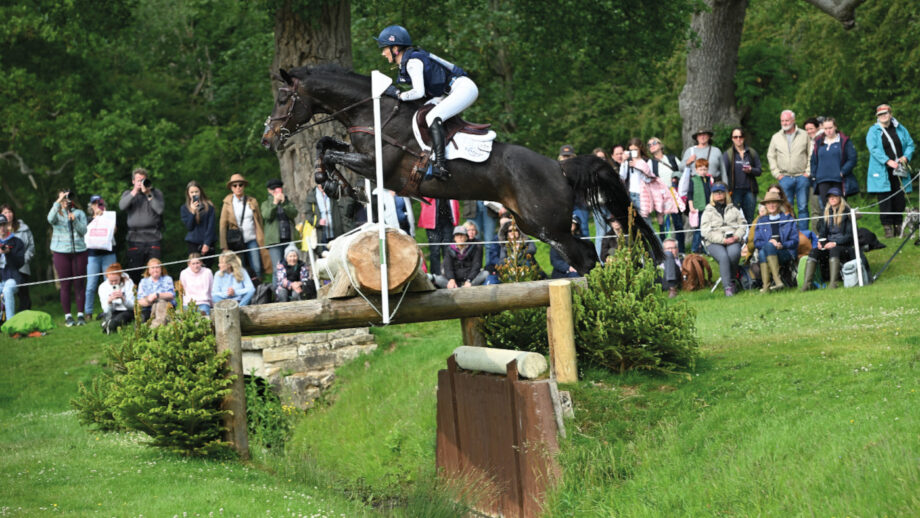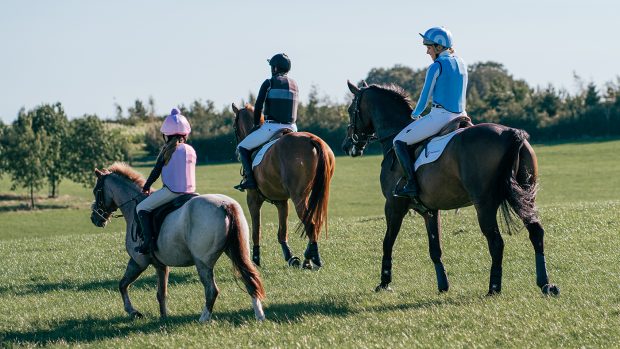Researchers have developed a new way to estimate how much energy horses use during international cross-country, which could benefit riders, trainers, vets and course-designers.
In a study published in Animals, the German Olympic equestrian committee (DOKR) and researchers from the free university of Berlin looked at the demands on horses during the cross-country phase at two- to five-star events.
The researchers developed a model, based on 691 runs by more than 250 horses at international events, by combining horse heart rate and blood lactate data with course information such as speed, terrain and difficulty level. Key findings included that terrain, speed and speed variability influence the energy demands – and that short-format competitions generally require more anaerobic effort than long-format.
“However, in general, anaerobic contribution to energy consumption during cross-country is only about 10% at most, indicating that 90% or more of energy requirements are supplied by aerobic pathways. Increasing the aerobic capacity of the horses should therefore be a primary goal of effective training programmes,” co-author Katharina Kirsch told H&H.
“For horses that compete at higher levels, anaerobic exercise should also be taken into account – especially for short format – however. The energy requirements attributed to speed fluctuations increased with increasing average speed, and were higher in short format. Therefore, the higher the average speed, the greater the impact of speed variations.”
Aerobic exercise is fuelled by oxygen that breaks down glucose in the horses’ muscles to provide sustained energy. Anaerobic exercise begins when the levels of oxygen are no longer able to supply the muscles with sufficient energy. Anaerobic exercise uses the energy stored in the horses’ muscles in the form of glycogen, and cannot be sustained for long periods.
Ms Kirsch said a very “irregular course” that requires the horse to change speed frequently, for example due to a lot of turns, can therefore significantly increase the effort required – but if a horse and rider “are very well attuned to each other and the course is completed very smoothly without extreme changes in speed, this may considerably decrease the effort that is required from the horse”. She added that individual horse fitness plays a major role, indicating the importance of individual training programmes.
“We already suspected that differences between horses would be high, but how big these actually are was somewhat surprising,” she said.
“Although horses in the same competition have to complete the same course under similar conditions, and we already accounted for speed and speed changes, it might still be that they perceive the physical demand very differently.”
Ms Kirsch and co-author Anna Liedtke added that the sport has changed significantly over time since the removal of roads and tracks and steeplechase, and an increase in technical difficulty.
“The deceleration required when approaching technically difficult obstacles consequently necessitates that the horses are galloping at higher speeds between fences. This frequent acceleration and deceleration has the potential to considerably increase energetic demands,” the researchers said.
“We showed in previous work that short formats usually elicit higher heart rates and blood lactate concentrations, potentially due to the fact that they involve a higher number of jumps per distance. In this study we were able to confirm our hypothesis and could show that speed changes have a significant impact on how much energy is required.”
Ms Kirsch said this work could help riders, trainers and vets in developing tailored training programmes and with early identification of over-training or injury risk – and course-designers may use the findings to “assess the physiological challenge posed by terrain and layout, beyond just jump complexity or distance”.
“Acknowledging the considerable impact course design may have on energetic demands may promote horse welfare by ensuring that courses are not unintentionally too demanding,” she said.
Ms Kirsch and Ms Liedtke said this study builds on a large dataset collected by DOKR’s performance monitoring programme, which supports the German national team and whose work involves ensuring horses are fit to compete and capable of meeting championship demands, “thereby improving the welfare of sports horses”.
“In future we would like to evaluate how our proposed model could be further refined to assess individual fitness levels and predict injury risks,” they said.
“We would also like to focus more on the mental load that is imposed on horses competing at high-level competitions.”




